The Historic Aura of السوق القديم in Dubai's Real Estate
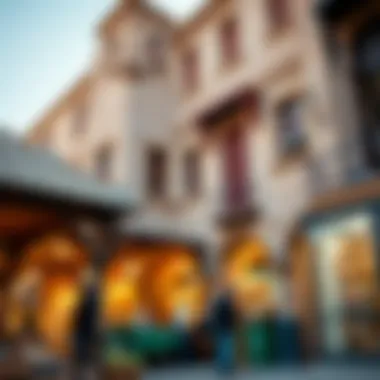

Intro
Dubai's real estate landscape has been reshaped significantly over the decades, with many hidden gems lying beneath the surface of its modern skyline. Among these treasures is السوق القديم, or the Old Souk, an emblem of cultural authenticity amidst rapid urbanization. The transformation of this historic market not only sheds light on Islamic trading traditions but also reveals how the past intermingles with contemporary investment opportunities. Understanding the dynamics surrounding this iconic marketplace allows investors and history enthusiasts to appreciate its layers, both architecturally and economically.
The evolution of السوق القديم provides a roadmap for today’s investors, illustrating how historic locations can influence and elevate property values. By delving into its architectural and cultural significance, we will uncover not only the charm of this age-old marketplace but also the potential it holds for modern real estate ventures.
Market Insights
Current Trends in Dubai Real Estate
Dubai has seen its real estate market undergo various phases of growth and contraction. The demand for properties near historic locales is on the rise. Investors are increasingly keen on areas like السوق القديم, where the blend of heritage and modernity is undeniable. Unlike newly developed districts, properties adjacent to the Old Souk carry a unique historical value, which appeals to buyers looking for more than just a dwelling; they seek a story, a connection to the past.
The market exhibits several current trends:
- Cultural Rejuvenation: There’s a growing interest in the cultural narrative of properties, with buyers willing to pay a premium for historical significance.
- Mixed-use Developments: More real estate projects are integrating commercial and residential purposes, fostering community spaces that echo traditional markets like السوق القديم.
- Sustainability: Eco-friendly buildings and preservation of local heritage are becoming key selling points in property transactions.
Economic Factors Affecting Property Prices
Several economic factors contribute to the fluctuating property prices in Dubai, particularly around historic areas.
- Tourism Boost: With السياح flocking to landmarks near the Old Souk, the demand for rental and hospitality services has surged, positively impacting property values.
- Government Initiatives: Policies aimed at enhancing the cultural sector, such as tax incentives for heritage restorations, can lead to investor confidence and a consequent uptick in property prices.
- Global Economic Stability: The macroeconomic environment, notably shifts in oil prices and foreign investment, plays a pivotal role in shaping the market dynamics.
Buying and Investing Tips
Essential Steps for First-Time Buyers
For those looking to dive into Dubai’s real estate scene, particularly around valuable heritage sites like السوق القديم, a few steps can pave the way to successful investments:
- Research Thoroughly: Understand the historical significance and current market values of properties in the area.
- Consult Local Experts: Engage real estate agents familiar with the nuances of the market. Knowledge is power, especially in a unique locale like السوق القديم.
- Inspect the Property: Visit the site to truly gauge its value. Pictures alone don’t tell the whole story.
- Check Legalities: Ensure all documents and ownership laws are clear, especially with heritage properties.
Financing Options and Investment Strategies
Investors should explore various financing avenues available in Dubai. Many banks offer tailored mortgages for properties in prominent areas, including those around the Old Souk. Here are some options:
- Traditional Mortgages: Standard loans with fixed or variable interest rates.
- Islamic Financing: Sharia-compliant options that might be appealing given the cultural context.
- Investment Funds: Real estate investment trusts (REITs) focusing on heritage properties can diversify investment portfolios while minimizing risk.
Engaging with local financial advisors familiar with Dubai’s real estate can enhance decision-making and ensure optimal investment strategies.
In real estate, knowledge isn’t just power - it’s profit.
The exploration of السوق القديم is more than a journey through time; it's an investment opportunity, connecting generations and empowering new ventures within Dubai’s eclectic real estate narrative. For a deeper glimpse, consider visiting Dubai’s Historical Sites or referencing Global Property Guide for updated market analyses and trends.
Understanding السوق القديم
The heart of Dubai beats resolutely within the walls of السوق القديم, a space that is not only historically rich but also pivotal in the tapestry of its real estate narrative. Understanding this marketplace is like piecing together a compelling story that intertwines rich heritage, cultural wealth, and modern economic transformation. This section aims to unpack these layers, offering insights into what makes السوق القديم a unique entity attracting both investors and history enthusiasts alike.
Historical Context
The historical context of السوق القديم plays a critical role in understanding its relevance today. Originally established as a trading hub, it served as a meeting point for merchants and consumers long before Dubai transformed into a global city. The area has roots going back centuries, where traders would swap spices, textiles, and other goods, reflecting the socio-economic dynamics of the time. Much like a fine rug woven over many years, each thread of history adds to the narrative fabric of this locale.
As Dubai began its transition from a modest fishing village to a sprawling urban center in the late 20th century, السوق القديم retained its sense of identity amidst rapid modernization. This ability to adapt yet maintain its cultural essence is worthy of examination.
"A city’s history is its backbone; even as it evolves, the past continues to shape its character."
Cultural Significance
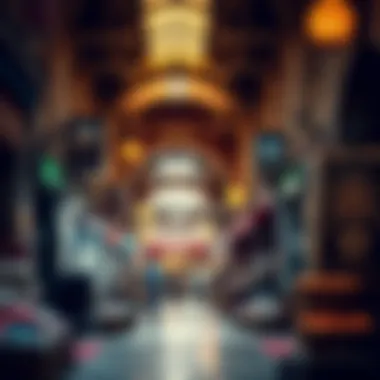
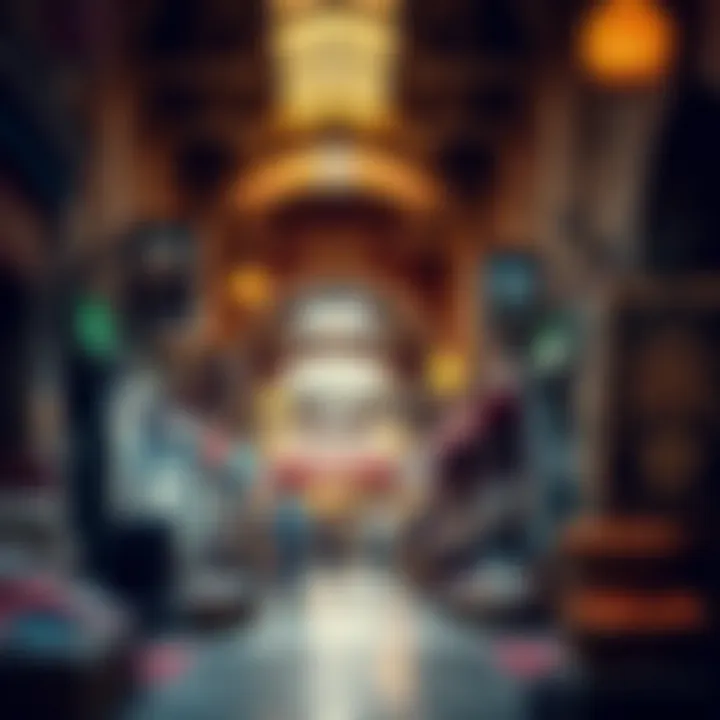
Culturally, السوق القديم stands as a beacon of heritage in a landscape increasingly dominated by skyscrapers and shopping malls. Its existence is not merely based on economic activity but encapsulates the lifestyle, values, and communal atmosphere of the people. The marketplace hosts various festivals and events that celebrate local art and craftsmanship, fostering a sense of community and belonging.
Moreover, the souk serves as a cultural exchange hub where visitors can experience authentic Emirati hospitality—a concept deeply rooted in the fabric of local traditions. This interaction between locals and tourists not only promotes cultural understanding but also underlines the area's importance in sustaining social interactions that have thrived for generations.
Architectural Features
Architecturally, the features of السوق القديم are a mix of traditional and modern design— a living testament to the city’s evolution. The winding paths and low-rise buildings create a sense of intimacy not often found in newer developments. The wind towers, or barajeel, commonly seen in the area, offer respite from the heat and are an architectural nod to Dubai's past that emphasizes sustainability.
The materials used, such as coral stone and clay, reflect a bygone era of resourcefulness and ingenuity. As you meander through the narrow alleyways, it’s hard not to appreciate the craftsmanship that went into making each space not just functional but also aesthetically pleasing. These elements collectively contribute to the unique character of the market and speak volumes about the cultural narrative it embodies.
Evolution of السوق القديم
The evolution of السوق القديم is critical to understanding not only its historical narrative but also its role in shaping Dubai's real estate landscape. This section illuminates the market's transformation from a traditional trading space to a modern urban destination, reflecting both economic trends and cultural shifts. Investors and stakeholders must keenly assess this evolution as it greatly influences contemporary market dynamics.
From Traditional Market to Modern Hub
In its early days, السوق القديم functioned as a bustling center where traders displayed their wares: spices, textiles, gold, and artisan crafts. The air was thick with the scent of incense, and the sounds of negotiation filled the vibrant alleyways. It was a place rich in social interaction, fostering a sense of community among merchants and patrons alike.
Over the decades, this traditional market saw significant changes. As Dubai embraced globalization and modernization, it had to adapt quickly. New construction and infrastructural developments were undertaken, leading to the establishment of modern facilities and enhanced accessibility. The streets, once narrow and winding, transformed into wider pathways, catering to a more extensive demographic. Shops were refurbished, bringing in contemporary designs, which, in turn, attracted new businesses.
- Key Elements of Transformation:
- Upgraded infrastructure improved the flow of foot traffic.
- Increased tourism led to a rising demand for modern amenities.
- Integration with technology, as vendors began to utilize digital platforms for advertising and sales.
Today’s marketplace balances rich heritage with a modern flair. Visitors can experience traditional art forms while enjoying contemporary cafes dotting the landscape. This congenial mix appeals to diverse demographics, from tourists seeking an authentic Dubai experience to residents enjoying the palpable energy of this historical site.
Key Transformations Over the Decades
Examining the key transformations undergone by السوق القديم offers invaluable insights into its current standing and future prospects.
In the late 20th century, high-rise developments around the market signaled a new era. The influx of international investment prompted market players to reassess the value of their properties. This was a pivotal moment: the market began to morph into a multi-functional space, accommodating not just commercial but also leisure activities.
- Factors Influencing Change:
- The establishment of the Dubai Shopping Festival highlighted the area's importance as a retail destination.
- Increased urbanization led to an expanded residential clientele.
“The success of السوق القديم as a modern hub hinges on its adaptability and the unique charm it retains from its storied past.”
With the last decade marked by accelerated real estate development in Dubai, the area surrounding السوق القديم has become an attractive site for investors. The implications are clear: those looking to invest should consider the cultural assets of the market. Coupled with advanced urban amenities, this entices consumers looking for lifestyle improvements.
As the world flocks to Dubai, understanding these transformations is essential for investors entering this vibrant marketplace. Balancing the essence of the old with the innovations of the new encapsulates the spirit of this evolving urban space. The interplay of tradition and modernity serves as a blueprint for other emerging markets, showcasing the dynamic capability of a historical site to adapt and thrive in an ever-changing economic landscape.
Market Dynamics and Real Estate Trends
Understanding the market dynamics and trends in real estate is like peering through a lens to see the broader picture. It brings clarity not only to the state of the market but also to the opportunities or pitfalls that lie ahead for investors and prospective buyers. The real estate narrative surrounding السوق القديم is one marked by a unique blend of historical significance and contemporary revitalization. By exploring current dynamics, investment prospects, and challenges, this section sheds light on how this ancient marketplace is evolving within Dubai's vibrant landscape.
Current Real Estate Landscape
The current real estate landscape around السوق القديم is a fascinating convergence of tradition and modernity. With its rich history echoing through its alleys, this area is no longer just a remnant of Dubai's past, but an active participant in its economic future. There’s a noticeable uptick in interest from both local and international investors, fueled by a desire to blend authentic experiences with modern commercial viability.
Real estate here is characterized by:
- A mix of old and new: Properties retain their original charm while being adapted to contemporary use.
- Cultural appeal: Buyers and renters are increasingly drawn to spaces that speak to their cultural roots or aspirations.
- Growth potential: As surrounding areas develop, market values within السوق القديم are projected to rise, mirroring the growth seen in Dubai's real estate overall.
This evolving landscape places a spotlight on both residential and commercial properties, encouraging vibrant new developments that respect the area's historical essence.
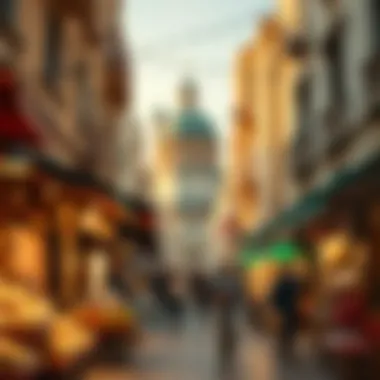

Investment Opportunities in and Around السوق القديم
The attractiveness of السوق القديم as a real estate investment center cannot be overstated. As urban areas around it burgeon, several key opportunities arise:
- Commercial Real Estate: The boom in tourism has led to increased demand for shops and restaurants. Investing in commercial spaces can yield high returns if done strategically.
- Residential Projects: With many opting for urban living that combines cultural richness and modern facilities, renovating traditional homes can cater to this growing demand.
- Mixed-Use Developments: The integration of residential, retail, and entertainment spaces can enhance foot traffic and vibrancy, presenting a lucrative avenue for investments.
Investors looking to capitalize on the resurgence of this locale should thoroughly research and possibly engage with local stakeholders to unearth optimal opportunities.
Challenges Facing Potential Investors
While the prospects are plenty, potential investors should approach this market with a keen understanding of the challenges involved:
- Regulatory Hurdles: Navigating the legal frameworks and licensing requirements for property development can be complex. Investors must stay informed about local regulations, which can change frequently.
- Economic Fluctuations: Market stability is susceptible to broader economic trends. Economic downturns or changes in tourism demand can heavily influence property values and rental incomes.
- Cultural Sensitivity: There's an intrinsic value in preserving the cultural heritage that السوق القديم embodies. Investors must balance modernization with respect for local traditions, which can sometimes complicate development plans.
By carefully considering these dynamics, investors can better position themselves in this unique real estate market.
In summary, the market dynamics surrounding السوق القديم present a rich tapestry of opportunity wrapped in certain challenges. Prospective investors must navigate these waters with care, balancing ambitions against the backdrop of historical and cultural significance, all while keeping an eye on the ever-evolving landscape of Dubai's real estate sector.
Socio-Economic Impact
The socio-economic impact of السوق القديم in Dubai extends far beyond its architectural and historical significance. This marketplace, a testament to the city’s rich tapestry of culture and commerce, serves as a vital nexus for community interactions and economic transactions. Understanding this impact provides insights into how the evolving real estate landscape is intertwined with the socio-economic fabric of Dubai.
Impact on Local Communities
The presence of السوق القديم is a lifeline for surrounding communities. It creates a bustling hub where both locals and visitors mingle, exchanging stories and goods. This interaction not only enhances the local culture but also strengthens community ties.
- Cultural Exchange: The market facilitates a blend of diverse traditions and cultures, allowing residents to reconnect with their heritage while also embracing modern influences.
- Support for Local Businesses: Small vendors and artisans who operate within the market benefit greatly. Their livelihoods are dependent on the patronage of both locals and tourists, creating a vibrant economy that supports families and fosters entrepreneurship.
Moreover, the revitalization of السوق القديم over the years has sparked economic growth in the surrounding neighborhoods. Real estate developments in proximity to the market are often prioritized, leading to an influx of residential projects that cater to new demographics looking to reside near cultural landmarks.
"A thriving market is not just about trade; it's about weaving community dreams into the very fabric of everyday life."
Employment Opportunities Generated
The economic dynamism of السوق القديم translates into various employment opportunities for locals. As the area has evolved, so has the range of jobs available, impacting both skilled and unskilled workers recovering from various sectors impacted by economic shifts.
- Job Creation in Retail and Tourism: The resurgence of the market has led to an increase in retail positions. Businesses that set up shop in the market need salespeople, managers, and support staff, creating numerous job opportunities that cater to the local community.
- Skilled Labor Requirements: Beyond simple retail, the restoration and maintenance of the market’s historic features require skilled labor. This means jobs for craftsmen, architects, and cultural conservationists, all crucial for preserving the unique identity of the market while meeting modern needs.
In summary, the socio-economic impact of السوق القديم is profound. By serving as a cultural beacon and economic engine, it not only plays a pivotal role in preserving Dubai’s heritage but also lays a foundation for economic resilience and growth. Investors, developers, and local government all have vital interest in nurturing this treasure, understanding the wins it brings to Dubai's real estate narrative.
Future Prospects of السوق القديم
The future prospects of السوق القديم in Dubai are not just a reflection of its past but a testament to its potential in shaping the skyline and economy of the emirate. This area, steeped in cultural heritage and historical significance, presents a unique intersection of tradition and modernity. With ongoing developments and a wealth of investment opportunities, understanding the future of this marketplace can guide investors, homeowners, and other stakeholders as they navigate through a dynamic real estate landscape.
Projected Developments in the Area
As Dubai continues to expand, the area surrounding السوق القديم is poised for various developments. These projects are likely to blend contemporary architecture with the traditional charm that defines the marketplace. Key projected developments may include:
- Mixed-Use Developments: Plans to create spaces that combine retail, residential, and commercial facilities, allowing for a vibrant urban atmosphere.
- Tourism Infrastructure: Given the cultural significance of السوق القديم, enhancements aimed at attracting tourists, such as improved road access and public amenities, could bolster local businesses and create a thriving marketplace.
- Community Spaces: The integration of parks and recreational areas within the vicinity can foster a sense of community, making it a desirable living and working environment.
These upcoming projects indicate a strong commitment to sustaining and nurturing the historical essence of the area, while adapting to the needs of modern society. Investors can expect a diverse portfolio of options as these developments unfold, with opportunities for profitable ventures.
Potential Changes in Investment Direction
As we gaze into the crystal ball, the investment trajectory in السوق القديم appears ripe with possibilities. Investors' sentiments may shift based on various factors that outline the potential changes in investment direction:

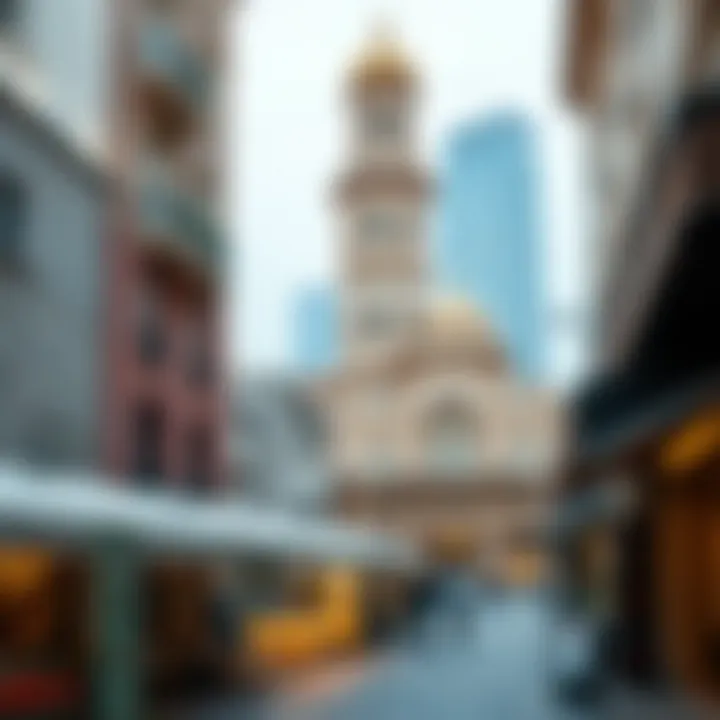
- Shifting Demographics: The influx of expatriates and young professionals seeking a vibrant neighborhood can redefine demand. This demographic shift may prompt developers to tailor their offerings accordingly, emphasizing lifestyle and community-centric developments.
- Government Initiatives: Dubai's strategic plans can influence investment trends. Policies that support cultural preservation, tourism, and sustainable living will likely attract more investors focusing on long-term gains rather than quick profits.
- Rising Interest in Sustainable Living: There is a growing trend towards sustainability in real estate. Investors may increasingly seek projects that demonstrate eco-friendliness while preserving traditional aesthetics, thus marrying old-world charm with modern needs.
In summary, the future of السوق القديم is not merely an extension of its history but rather an optimistic outlook that blends past, present, and future. With well-thought-out developments and shifts in investment focus, this historic marketplace holds significant promise for those looking to be part of Dubai's evolving real estate narrative.
Comparative Analysis with Other Market Areas
When trying to understand the unique position that السوق القديم holds within Dubai's real estate landscape, it is crucial to conduct a comparative analysis with other market areas. This approach not only highlights the distinct qualities of the old market but also provides deeper insights into why it persists as a pivotal area for real estate investment. By drawing comparisons, stakeholders can identify both the potential drawbacks and benefits inherent to this iconic marketplace.
Contrasting Characteristics with New Developments
The contrasting characteristics of السوق القديم with newer developments in Dubai display a rich tapestry of features influenced by history and culture. For instance:
- Architecture and Design: While the modern sky-piercing structures like Burj Khalifa and Dubai Mall boast sleek glass facades, السوق القديم presents a different aesthetic with its charming lanes and traditional architecture. The low-rise buildings, intricate wooden door designs, and the continual interaction with the environment all contribute to a sense of nostalgic beauty.
- Market Atmosphere: New developments generally offer a more commercialized and sterile environment focused on retail. In contrast, السوق القديم fosters vibrancy through its cultural trade practices and local interactions, giving visitors a taste of Emirati heritage and day-to-day life that newer areas simply can't replicate.
- Community Engagement: The community-driven aspect of السوق القديم is another layer that separates it from contemporary markets. The interactions here often boast warmth and familiarity, whereas newer markets might feel like they serve tourists and transient layover guests.
Lessons from Other Markets
Investigating how other historical marketplaces worldwide relate to modern growth could yield significant lessons for the future of السوق القديم. For instance, cities like Istanbul with its Grand Bazaar or Marrakech’s souks have successfully navigated the balance between cultural preservation and modernization. Key takeaways include:
- Balance Between Tradition and Innovation: Just as the Grand Bazaar in Istanbul thrives by blending traditional products with modern storefronts and services, السوق القديم can look into integrating modern technology or contemporary dining experiences while preserving its traditional artisanal vibe.
- Historical Preservation: Places like Venice have shown that tourism and historic preservation can coexist. By investing in maintaining and showcasing its history, السوق القديم could attract not just investors but also a wave of international tourists eager for authentic experiences.
- Cultural Programs and Events: Similar to how other historical markets engage visitors through cultural events and workshops, السوق القديم has an opportunity to enhance community participation by hosting arts, crafts, and culinary events, bringing together visitors and locals alike to celebrate its heritage.
In synthesizing these points, it's evident that السوق القديم doesn’t just hold its ground; it holds unique opportunities that, if leveraged correctly, can further enrich Dubai’s real estate narrative. Moving forward, understanding its position in relation to both emerging developments and other marketplaces can serve as a valuable foundation for future growth.
Consumer Perspectives
In today's fast-paced real estate landscape, understanding consumer perspectives is crucial for anyone involved in the market around السوق القديم. This historic marketplace not only serves as a significant landmark but also reflects the dynamic pulse of Dubai’s real estate sector. Investors, homeowners, and agents all have unique viewpoints, driving various demands and expectations that shape this market.
The significance of consumer perspectives stems from the following:
- Diverse Buyer Interests: Buyers in السوق القديم come with various priorities, whether it’s the pursuit of cultural experiences, investment potential, or simply a desire for a piece of history. Understanding these differing motivations allows developers and agents to tailor their offerings effectively.
- Influence on Property Values: The type of properties consumers favor can significantly influence the pricing and valuation of real estate in the area. If the community shows a preference for traditional architectural styles, for example, it may spur developers to focus on restoring historical features, impacting overall market value.
- Cultural Relevance: There’s a craving among buyers for authenticity. The history and cultural significance attached to السوق القديم can be a great selling point, making buyers more inclined to invest where they feel an emotional connection.
What Buyers Look for in السوق القديم
When contemplating a purchase in السوق القديم, buyers have a laundry list of features they look for:
- Authenticity of Experience: Many buyers wish to immerse themselves in the rich heritage surrounding the area. Properties that retain traditional aesthetics or are situated near cultural sites tend to have an edge.
- Accessibility and Connectivity: Proximity to public transport and major highway links enhances appeal. Buyers want ease of access to other parts of Dubai, while also being able to enjoy the historical charm of the market.
- Investment Potential: For those looking to flip properties or rent them out, the growth prospects of the area are critical. They look for signs of upcoming developments that could increase property values in the future.
- Community Feel: A vibrant community atmosphere, with shops, cafes, and ongoing cultural activities, is highly valued. This creates a sense of belonging and liveliness to potential buyers.
- Safety and Security: Like most markets globally, buyers prioritize safety. The presence of security is a crucial factor that can either make or break a deal.
Investor Sentiments at Present
Current sentiments among investors in the السوق القديم are a mixed bag, reflecting both optimism and caution:
- Positive Outlook for Returns: Many investors believe that the demand for properties rooted in history within the context of Dubai’s rapid development will yield high returns. The allure of combining traditional with modern provides a unique investment opportunity.
- Skepticism Around Regulation: Nonetheless, some express concerns regarding the regulations involved in property transactions in older parts of the city. Adapting to legal frameworks that prioritize preservation while also allowing for development can be a bit tricky. "You’ve got to dot your i’s and cross your t’s here, or you might find yourself in hot water," a seasoned investor recently stated.
- Interest in Sustainable Developments: There’s an increasing interest in sustainability, with investors looking for projects that not only respect the fabric of التاريخ but also prioritize eco-friendly methods. This forward-thinking mentality indicates a shift towards aligning values with investment choices.
- Market Trends Awareness: Investors are keeping a close eye on trends, such as the increasing preference for mixed-use developments that combine residential, commercial, and cultural spaces. Insights from external sources suggest that these trends may set the stage for future prosperity in the market.
As consumers and investors alike reflect on their perspectives towards السوق القديم, it’s evident that their needs and sentiments will continue to shape the real estate conversation in Dubai. Understanding these elements gives stakeholders the ability to navigate the market more effectively, ensuring alignment with the evolving pulse of the community.
End
In summarizing the insights gained about السوق القديم, one can’t help but appreciate its complex role in shaping Dubai's real estate landscape. The intertwining of historical influences with modern developments creates a unique narrative that merits deeper exploration. This section emphasizes several key elements that underline the importance of the topic in this article.
Summary of Findings
The findings presented throughout this article illustrate that السوق القديم is more than just a marketplace; it serves as a cultural touchstone for the city of Dubai. Key points include:
- Historical Significance: Rooted in the region's past, السوق القديم embodies the evolution of trade and commerce in Dubai, acting as a reflection of the city's growth from a humble fishing village to a bustling metropolis.
- Architectural Heritage: The architectural features, with their intricate designs and traditional materials, resonate with the history and culture of the Emirates, representing a time when craftsmanship was paramount.
- Economical Impact: The marketplace remains a vital part of the local economy, generating employment and providing a platform for various businesses, from artisan work to hospitality ventures.
- Investment Opportunities: As prospective investors look at the region, understanding market dynamics around this historic site can spark fresh interest and innovative projects tailored to both locals and tourists alike.
Final Thoughts on the Future of السوق القديم and Real Estate Integration
Looking toward the future, the integration of السوق القديم into the broader real estate narrative of Dubai will be critical. Investors and developers must appreciate the marketplace’s legacy while seeking to modernize and enhance its offerings. The challenge will be to ensure that any new developments respect the historical context while also catering to contemporary lifestyle needs.
Furthermore, the city's commitment to preserving cultural sites bodes well for the future of السوق ال�قديم. As modernity continues to reshape the urban landscape, it’s crucial that this historic area doesn’t get lost in the shuffle. The potential for revitalization and sustainable development will not only enhance investor sentiment but also strengthen ties with local communities, maintaining the integrity of this cherished landmark.
"Keeping traditions alive in the face of rapid change requires thoughtful integration and respect for history."
For more detailed discussions on Dubai's cultural heritage and real estate opportunities, resources at Wikipedia and Britannica can be quite beneficial.











